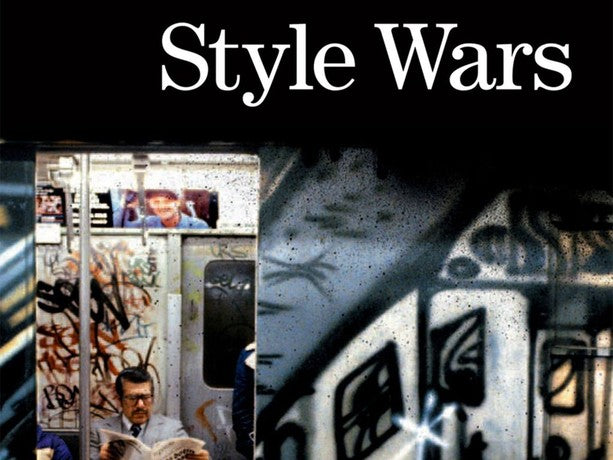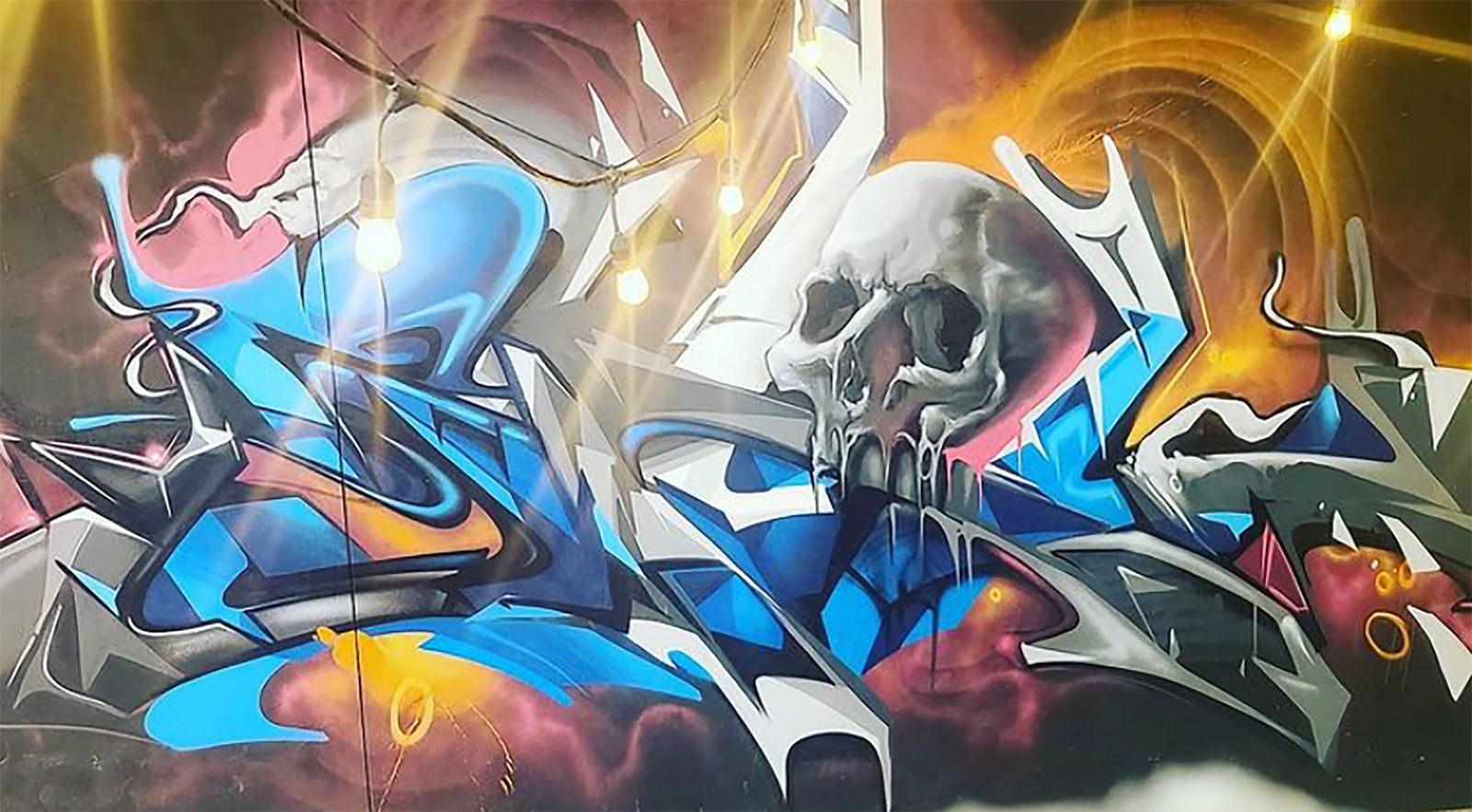There is a reason we, as audience, like artists who push the boundaries of art in its form. Street art, despite being a medium that is closely associated with challenging messages, can become surprisingly limited when the wall is treated as a flat canvas. Street artists like Herbert Baglione work hard to avoid becoming a victim to that way of thinking.

Herbert Baglione’s approach to graffiti art is all about adapting to the surrounding objects, architectural structure of the buildings, and even lighting in ways that are meaningful. Herbert brings out something completely new in the spaces he works with. He captures the eye, fascinated the mind, invites all the reactions and interpretations.

Excited to learn more? We will take you through some of the most influential works from Herbert Baglione’s photo gallery and explore his unique influences and his methodology.
"To paint on walls became severely automatic. And to play with this thing on the ground and other city structures drew a different kind of interest for the city. To see things one did not see before."
Herbert Baglione for the Exhibition “Street-Art Brazil.” Video interview by Schirn Kunsthalle Frankfurt.

Influenced by the City: Background, Influences, Successes
Herbert Bagilone was born in 1977 in São Paulo, Brazil, raised by a family with strong Italian roots. When Herbert was three years old he began drawing. Since then and throughout his journey as an artist, Herbert has been encouraged and supported by his older brother, William Bagilone. William, in turn became a very involved lifestyle photographer.

Since the time Herbert truly began his work around 1986 his Graffiti Art gained international acknowledgement. He participated in exhibitions since the 1994 “Mostra Paulista de Graffiti” and “Um minuto de silencio” in Brazil, and, starting in 2001, his influence expanded to such countries as the US, Germany, Switzerland, Denmark, Italy, France, and Russia.

In 2008 Herbert published his art book, Vossia, which is as a collection of Herbert’s most frequently explored evocative themes of death and afterlife, sexuality, faith, chaos, isolation and coldness, and complexity of human connection to the world. Exploring his earlier years in the interview for VANS, Herbert described the architecture of his home city, the urban skateboarding scene, and punk culture as major influences on his artistic style to this day.

Herbert also had a chance to collaborate with such Brazilian artists as Os Gêmeos, Nina Pandolfo, and Vitché. The New York Times MagazineAugust 2013 issue reflected on the influence and popularity of these Brazilian artists, praising their continued pursuit of working on the streets illegally, despite their fame.
Herbert Baglione, however, eventually pursued mediums other than the walls of buildings.
Street Art that Challenges the Form: “1000 Shadows” Project
As a part of his “1000 Shadows” street art project, Herbert stepped inside a 16-century church in Celles-Sur-Belle, France and an abandoned psychiatric hospital in Parma, Italy. The resulting art became Herbert’s most popular and well-known work. Whereas for 15 years leading to 2013 Baglione marked locations all around the world with his signature shadow figures (both on the streets and as a part of galleries), the first stages of this new project truly pushed boundaries of street art as a form.

The history-formed stage of the two locations pushed Baglione to adapt to the architecture, state, and objects of the spaces he worked within. Inside the abandoned psychiatric hospital Herbert used the lit and dark rooms rather cleverly, intending for certain parts of his paintings to be seen very clearly while others dissolve in the shadows.

In addition to experimenting with the light, Herbert used his art style to enhance the feeling created by the crumbling wall paint and empty halls, effectively introducing the feeling of supernatural presence. A particularly impressive use of the surroundings is visible in the way Herbert used the old wheelchairs, to which he attached the haunting figures. The otherwise silent halls took on a sinister suggestion of the afterlife’s unrest and location-appropriate feel of mental torture.

At the same time, the ephemeral nature of the scenes Herbert was setting up highlighted the importance of artistic photography. Just as William supported his brother during his early beginnings as an artist, he continued to help Herbert by lending him his skills as a photographer. Before any of the carefully set locations were disturbed, William carefully captured the original composition of the scenes to be preserved as Herbert’s clever work of art.

The fragile assembly of dust and leaves inside the 16-century church, as well as the careful positioning of the chairs most likely did not live long. However, in their preserved form on a photograph the used objects can be carefully studied for their added meaning as a part of a piece of art. With the chairs signaling connection to the activities of the leaving humans, the air-light particles making up the shadow figure at the end of the spiral reinforce the ghostly nature of the afterlife.

Process of Mural Art Creation: Quirky Behavior, Invested Mind
Herbert Baglione is also known for his mad genius and some of his unpredictable quirks that demonstrate his daring relationship with mural art as a form. A Russian news report on the Brazilian cultural exhibition in Moscow presented Herbert as an unpredictable artist who actively withdraws into his internal world during the process of creating his work.
And, surely, as people kept watching other Brazilian artists of the gallery, Herbert suddenly pulled out his white spray paint can and began aggressively striking his half-completed work out of existence, almost hitting the wall with his brisk swipes. You can watch the visual reaction of the audience and the self-absorbed motions of Baglione in this video.
At the same time, Herbert’s mural art at Nuart Festival11 in Norway is a long section of the wall covered in numerous chaotic two-color illustrations in a variety of styles, evoking separate themes. During the mural art’s creation, fellow graffiti artists, David Choe among them, note the overwhelming chaos of the art by jokingly pleading Herbert to stop what he is doing.

At the same time, Herbert’s mural art at Nuart Festival11 in Norway is a long section of the wall covered in numerous chaotic two-color illustrations in a variety of styles, evoking separate themes. During the course of the mural art’s creation, fellow graffiti artists, David Choe among them, note the overwhelming chaos of the art by jokingly pleading Herbert to stop what he is doing. At the same time, one of the old comments about the mural remarks that Herbert “is a nutty genius.”

New Works by Herbert Baglione
Just as Herbert Baglione suddenly appears in the spotlight, so does he withdraw without much of an update. On his Facebook page there isn’t much posted since his latest mural in 2017 (pictured above). The latest post features Herbert proudly presenting the signed and numbered print set of photographs of his work from the abandoned psychiatric hospital in Italy. Also posted are the links to the limited editions Instagram where he sells similar limited prints of artwork done by himself and his brother William.

However, if you are eager to check out what Herbert did to his personal Instagram page this summer and be amused by his unique and challenging art style yet again, you should definitely do so. Hint: go to the very bottom of the feed and slowly scroll up. You will be pleasantly surprised.
If you are pleased with what you see, then you have probably developed an intuitive feeling of what Herbert Baglione is all about. How would one put it into words? Probably, “challenging the format in novel ways that create experiences with infinite potential meanings.” If that sounds complex to you, we are probably on the same page.
Compelling complexity is what makes good art! And if Herbert’s clever and meaningful way of challenging the format of street art is not good art, then it’s hard to say what is.







Leave a comment (all fields required)